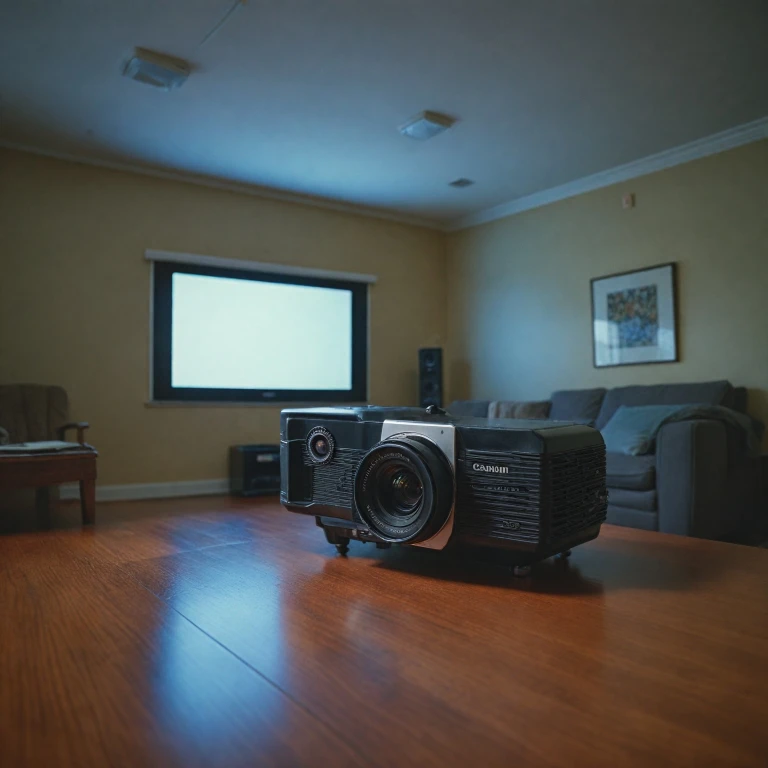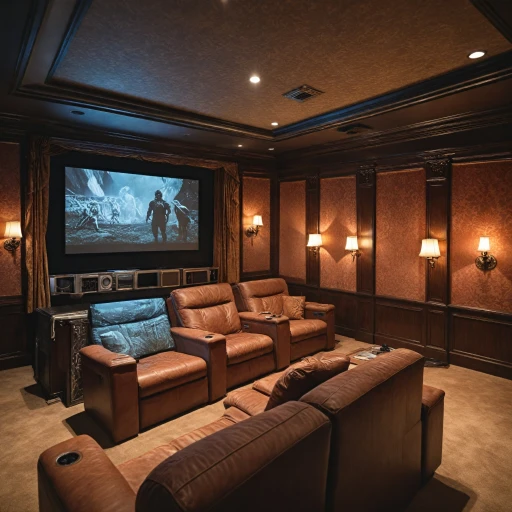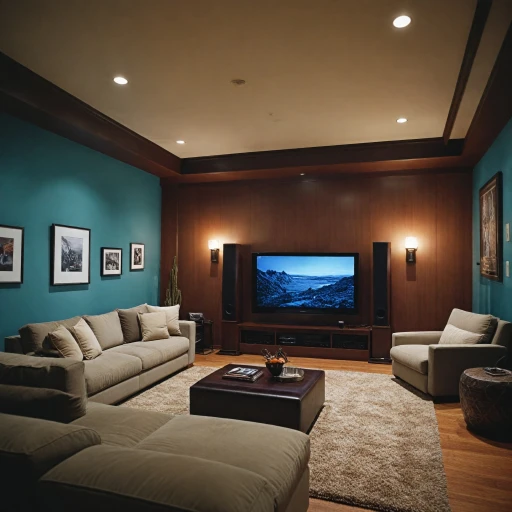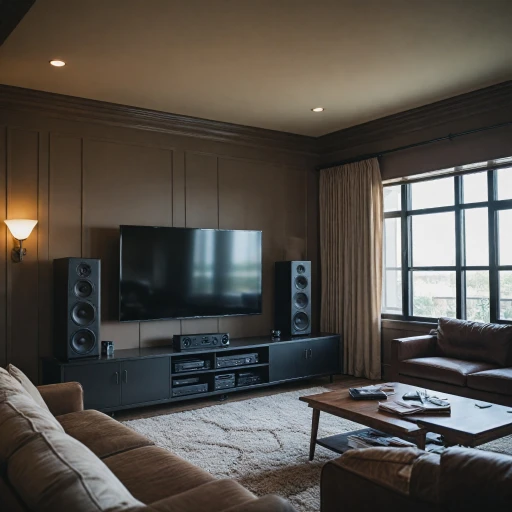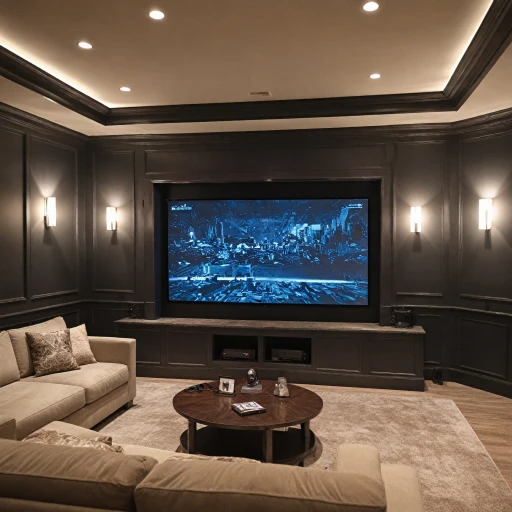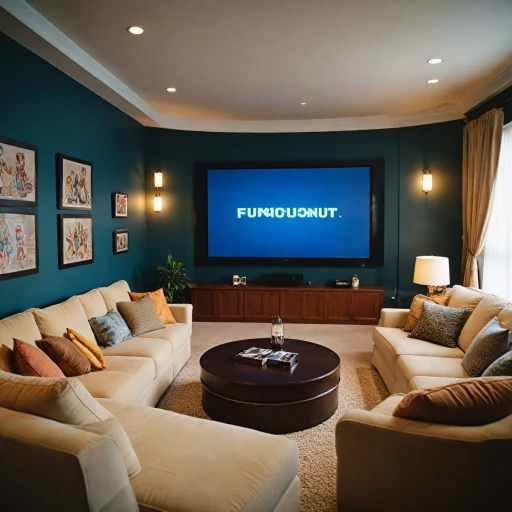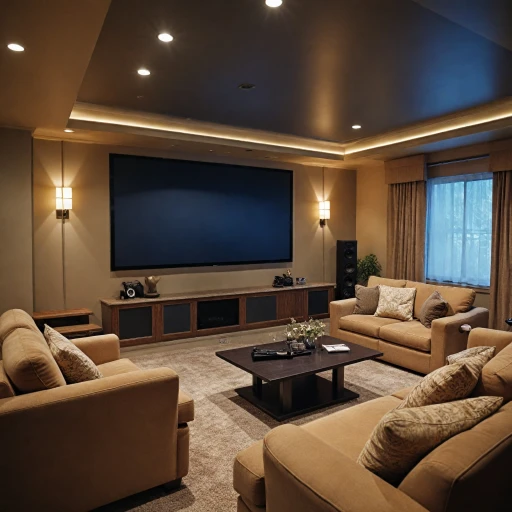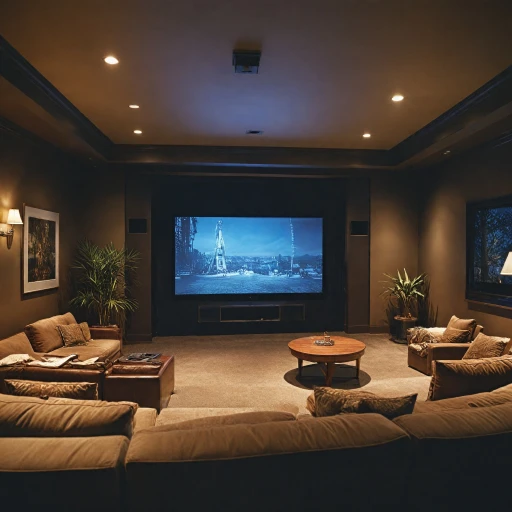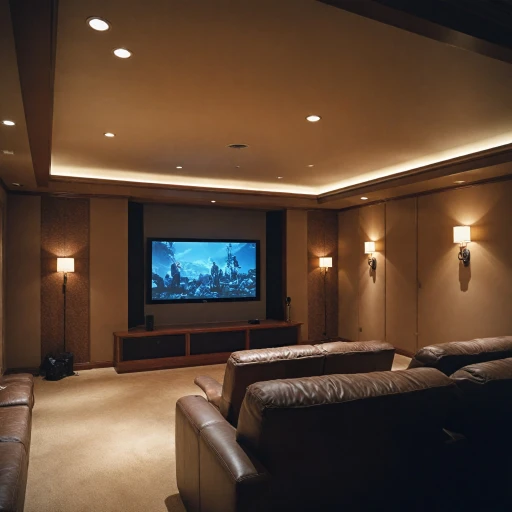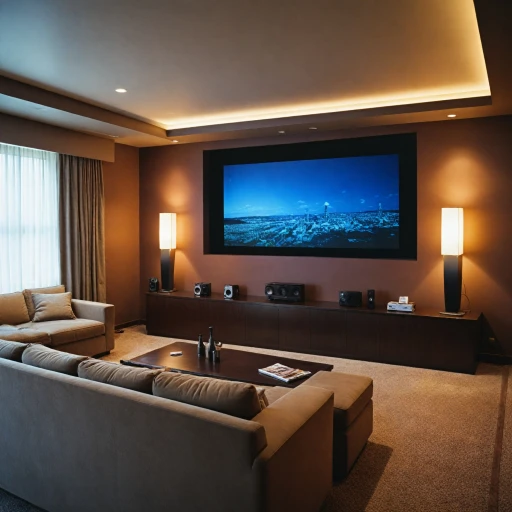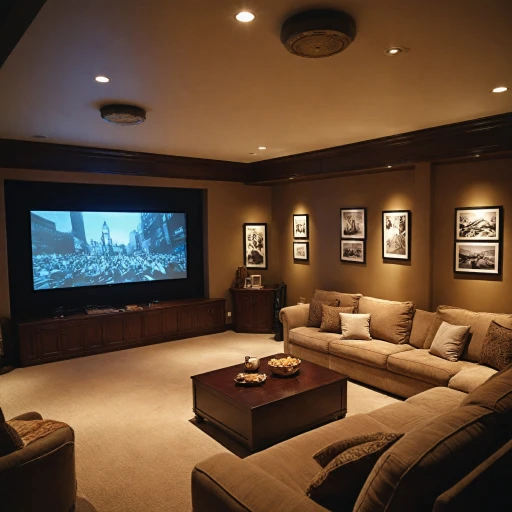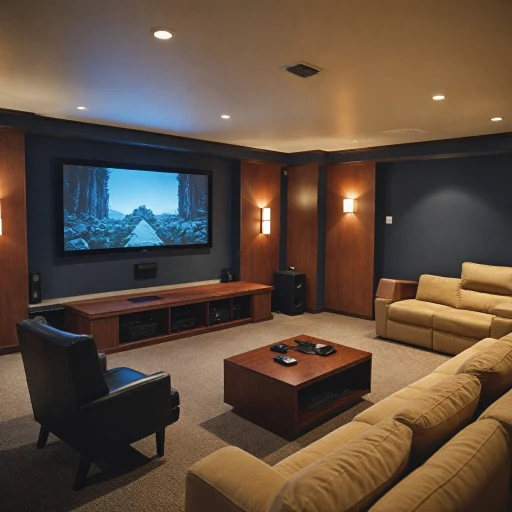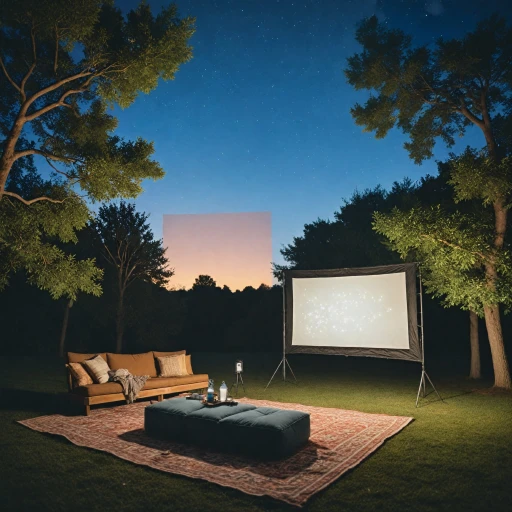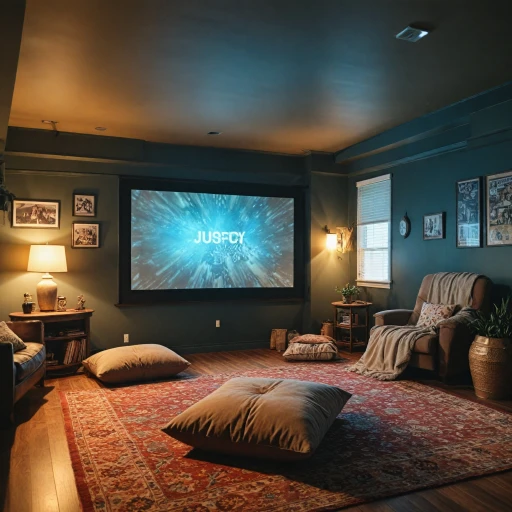
Understanding HDMI Connectors
Demystifying HDMI Connectors in Home Theater Projectors
The role of video ports in home theater projectors is pivotal for ensuring high-quality audio video transmission. Among these, HDMI connectors stand out as a preferred choice for enthusiasts looking to achieve the best picture and sound experience. HDMI, or High-Definition Multimedia Interface, is prized for its ability to carry both high-quality audio and high-definition video signals through a single cable, making it indispensable for seamless entertainment setups.
One of the key reasons for HDMI’s prominence is its capacity to support various data types over substantial distances. When setting up a home theater, the length of the HDMI cable becomes crucial, as longer cables can lead to signal degradation. It's often recommended to consider HDMI extenders or active HDMI solutions for optimal performance, particularly over long distances. These can help maintain signal integrity when you're dealing with cable lengths that stretch beyond an average room setup.
Understanding the standard HDMI cables is essential, as choosing the right type can impact the overall transmission quality. Different HDMI cables support varying resolutions and formats, so selecting a high-quality HDMI cable is necessary for those looking to maximize their projector’s capabilities. Recognizing the importance of signal quality, it's also worth exploring wireless HDMI solutions as a modern alternative for minimizing physical cable length issues while maintaining effective data transmission.
Factors Affecting HDMI Quality
Key Elements That Impact HDMI Performance
When it comes to maintaining high-quality audio and video transmission through HDMI cables, several crucial factors come into play. While these connections are designed to provide pristine digital signals, various elements can influence the overall signal quality, leading to potential degradation.- Cable Length: HDMI cables can vary significantly in length, ranging from a few feet to much longer distances. The length of the cable can play a significant role in affecting the quality of the HDMI signal. Over longer runs, you might experience signal loss, especially if not using a high-quality or active HDMI cable. A simple video port to VGA adapter could also be used in some scenarios to address compatibility concerns.
- Cable Quality: Not all HDMI cables are created equal. Some are built to handle specific capabilities, such as deep color or advanced audio formats. High-quality HDMI cables generally ensure better performance across these parameters. Investing in premium cables can help maintain optimal signal integrity over various lengths.
- Signal Degradation: Signal degradation can occur due to cable aging, interference within the transmission, or the inherent limitations of the materials used in standard HDMI cables. The use of HDMI extenders or repeaters, especially in scenarios involving long HDMI cables, can significantly mitigate this issue.
- Use of HDMI Extenders: For situations where long distances between the source and display are unavoidable, using HDMI extenders can be beneficial. These devices are designed to enhance the signal and reduce degradation over long runs. Options include wireless HDMI solutions and fiber optic cables, which can maintain signal integrity over extended distances more effectively than traditional cables.
- High-Frequency Signals: As data transmission rates increase with advancements in HDMI standards, maintaining these high-frequency signals becomes essential. Poor signal transmissions can lead to pixelation, flickering, or even a loss of both audio and video signals.
Common HDMI Issues
Addressing Typical HDMI Concerns
When setting up a home theater projector, encountering HDMI issues isn't uncommon. The good news is that most of these problems can be easily resolved. Addressing these concerns is crucial as they can significantly affect the quality of both audio and video transmission, potentially degrading the overall viewing experience.
One frequent issue is signal degradation. HDMIs are designed to transmit both audio and video signals over long distances. However, as cable length increases, there's a higher chance of signal loss. This loss can manifest as a drop in video or audio quality. Investing in a quality HDMI cable, preferably a high-quality or fiber optic model, can help mitigate this problem, ensuring the integrity of your signal over longer distances.
Another hurdle is dealing with interference, often encountered when using multiple devices simultaneously. This can lead to signal disruptions, especially when cables are run near power sources or wireless devices. Using HDMI extenders or active HDMI cables can be beneficial in such cases, allowing for clearer transmission by dealing with potential disruptions. Additionally, wireless HDMI solutions are an option for avoiding some common interference issues, though it's essential to ensure the device's compatibility with your existing setup.
Sometimes, despite using the best HDMI cables available, some might experience limited HDMI signal transmission across long lengths of up to 100 feet or more. In these cases, an HDMI extender becomes a necessity. These devices extend the HDMI signal by boosting it, allowing it to travel over longer distances without any loss in quality. They can be used in combination with standard HDMI cables to offer greater flexibility and reliability in your setup.
For those interested in achieving an immersive home theater experience, considering an acoustically transparent screen can complement a well-optimized HDMI setup, ensuring both high-quality visuals and sound.
Choosing the Right HDMI Cable
Deciphering the Ideal HDMI Selection for Your Home Theater Setup
When it comes to maximizing the viewing experience in your home theater, the choice of HDMI cables can greatly affect both video and audio performance. Quality HDMI cables are engineered to handle large data transfers which enable high-definition video and seamless audio transmission. This becomes particularly important as devices and display resolutions continue to evolve.
The primary consideration should be cable length. For standard HDMI cables, it's usually advised to limit the length to avoid signal degradation. If long distances are necessary, say over 25 feet, you might experience quality loss in both video and audio. In such instances, opting for active HDMI cables can counteract the issue by boosting the signal through long lengths, maintaining quality.
Alternatively, for extensive distances, HDMI extenders or fiber optic cables are worth considering, as they can effectively transmit signals over long stretches without significant degradation. Moreover, wireless HDMI solutions offer a clutter-free setup, though they may sometimes struggle with signal quality over longer distances.
As for connector quality, it is vital to choose high-quality HDMI connectors that are less likely to wear out quickly. Poor quality connectors can lead to signal loss and eventual setup malfunction.
When you're selecting an HDMI cable, always make sure it's compatible with your devices' requirements and supports the signal quality you desire, which can range from regular HD to UHD and beyond. Quality HDMI cables will assure you're receiving the best possible audio video experience, free from interruptions or quality drops.
Troubleshooting HDMI Problems
How to Troubleshoot HDMI Problems in Your Home Theater
Experiencing HDMI issues can hinder the enjoyment of your home theater, but understanding how to troubleshoot these problems is crucial. First, check the cable for any visible signs of damage. An HDMI cable carries audio and video signals, and any physical damage can affect signal quality. Replace any damaged cables with quality HDMI cables. Secondly, verify that the connections are secure. Sometimes, a loose connection can cause signal loss, leading to degraded audio or video quality. Ensure the HDMI cable is firmly connected to both the projector and the source device. If you're using long HDMI cables that exceed the standard length (usually about 50 feet), signal degradation might occur. In such cases, consider using HDMI extenders or active HDMI cables to boost the signal over long distances. For those using wireless HDMI solutions, ensure that there are minimal obstructions between the transmitter and receiver and they're within the recommended distances. Testing the system with alternative connection points or devices can help identify if the issue lies with the cables or the ports. Use a different HDMI port if your projector offers multiple ports, or try connecting another device to rule out hardware malfunctions. Additionally, ensuring all software or firmware updates are applied to your devices can resolve many connectivity issues. Manufacturers often release updates to improve compatibility and performance. Addressing these points should help maintain high-quality signal transmission, ensuring your home theater delivers the best audio video experience possible.Future of HDMI and Projectors
The Future Landscape of HDMI and Projectors
As technology rapidly evolves, the collaboration between HDMI cables and home theater projectors remains essential. New developments continue to pave the way for enhanced integration and performance, especially in handling audio-video signals over long distances.
One of the most promising trends is the adoption of fiber optic HDMI cables. These cables leverage fiber optics to minimize signal degradation, ensuring high quality transmission over long distances. With reduced signal loss and the capacity to maintain quality over extended lengths, fiber optic is becoming a preferred choice for demanding setups.
Additionally, advancements in wireless HDMI technology are transforming the way we think about home theater installations. By eliminating the need for physical cables, users can maintain a clean setup without compromising on audio or video quality. Although wireless solutions sometimes struggle with latency and interference, continuous improvements aim to overcome these challenges, making them increasingly viable for home use.
An often overlooked yet crucial aspect is the development of HDMI extenders. These devices, particularly active HDMI extenders, can amplify and stabilize signals over significant distances, ensuring that even long HDMI cables deliver consistent performance. Coupled with innovative technologies, HDMI extenders support the seamless transmission vital for high-quality home theater experiences.
As we look ahead, the focus will be on further enhancing the resilience and adaptability of HDMI systems, particularly with the potential integration of 8K resolution and beyond. Manufacturers and consumers alike will benefit from keeping abreast of these trends, ensuring the best possible signal quality, no matter the setup.
